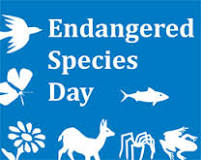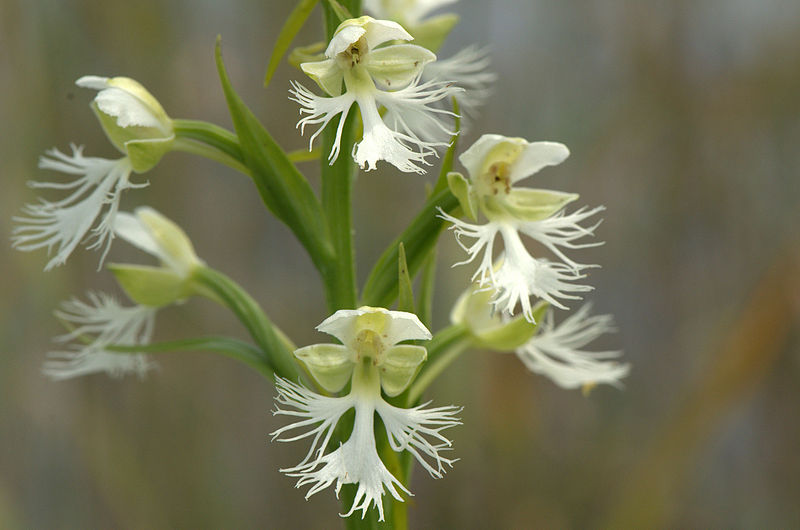|
This year marks the 12th annual Endangered Species Day! This day focuses on celebrating biodiversity and protecting species of plants and animals most at risk. Biodiversity is important because each species no matter how small has an important role to play in the larger ecosystem. As a society we rely on these species for various aspects of our own existence. According to the U.S. Fish and Wildlife Service, as of March 2017, there are a total of 503 animal species and 773 plant species listed as endangered and 208 animal species and 168 plant species listed as threatened. One step the United States has taken to help protect biodiversity was the passage of the Endangered Species Act in 1973. The purpose of the ESA is to "protect and recover imperiled species and the ecosystems upon which they depend." It is administered by the U.S. Fish and Wildlife Service and the Commerce Department’s National Marine Fisheries Service (NMFS). The FWS has primary responsibility for terrestrial and freshwater organisms, while the responsibilities of NMFS are mainly marine wildlife such as whales and anadromons fish such as salmon. Under the ESA, species may be listed as either endangered or threatened. “Endangered” means a species is in danger of extinction throughout all or a significant portion of its range. “Threatened” means a species is likely to become endangered within the foreseeable future. All species of plants and animals, except pest insects, are eligible for listing as endangered or threatened. For the purposes of the ESA, Congress defined species to include subspecies, varieties, and, for vertebrates, distinct population segments. (https://www.fws.gov/ENDANGERED/esa-library/pdf/ESA_basics.pdf) At least 40 percent of the world’s economy and 80 percent of the needs of the poor are derived from the biological resources. In addition, the richer the diversity of life, the greater the opportunity for medical discoveries, sustainable economic development, and adaptive responses to such new challenges as climate change. -Convention on Biodiversity In Ohio, there are 119 animal species listed as endangered, 54 listed as threatened, and 102 listed as Species of Concern. The Division uses six categories: endangered, threatened, species of concern, special interest, extirpated, and extinct, to further define the status of selected wildlife. These categories and the species contained within them are revised as our knowledge of the status of Ohio’s wildlife evolves.
For a complete listing of Ohio wildlife species, visit: http://wildlife.ohiodnr.gov/portals/wildlife/pdfs/publications/information/pub356.pdf Six Ohio plants are also on the federal list of endangered and threatened species. These include: Running buffalo clover (Trifolium stoloniferum) Northern monkshood (Aconitum noveboracense) Lakeside daisy (Tetraneuris herbacea) Small whorled pogonia (Isotria medeoloides) Prairie fringed orchid (Platanthera leucophaea) Appalachian spiraea (Spiraea virginiana) For a complete list of rare Ohio plants, visit: http://naturepreserves.ohiodnr.gov/rareplants Protecting species for current and future generations is a responsibility that falls to all of us. Together we can safeguard habitats and biodiversity in our own communities and across the globe!
1 Comment
11/10/2021 08:51:18 am
Celebrating endangered species day helps raise awareness, for it marks a date to remind all that there are animals and plants facing extinction and need help. It opens an opportunity to reach more people and open one's mind about this issue.
Reply
Leave a Reply. |
Details
Author:
|
|
|
Contact:PHONE: (513) 695 - 1337
EMAIL: [email protected] HOURS: Monday - Friday 7:30am - 4:00pm (except holidays) Connect:Warren County Soil & Water Conservation District Copyright © 2016
Warren SWCD Privacy Notice. Emails are serviced by Constant Contact. Constant Contact's Privacy Notice. |




